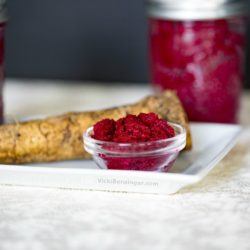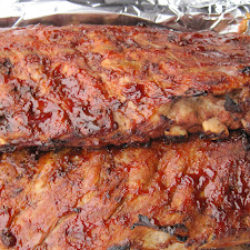Healthier Eating in 2011!
We all know that eating an abundance of fresh fish, fruit and vegetables plus daily exercise is the best way to live a healthy lifestyle. However, for many it’s a hard thing to do. We’re well aware that fruits and vegetables contain disease-fighting phytochemicals and antioxidants, but most people do not realize whole grains are often an even better source of these key nutrients.
Whole grains have some valuable antioxidants not found in fruits and vegetables, as well as B vitamins, vitamin E, magnesium, iron and fiber.
The medical evidence is clear that whole grains reduces the risks of heart disease, stroke, cancer, diabetes and obesity. Few foods can offer such diverse benefits.
People who eat whole grains regularly have a lower risk of obesity, in addition to lower cholesterol levels.
Because of the phytochemicals and antioxidants, people who eat three daily servings of whole grains have been shown to reduce their risk of heart disease by 25-36%, stroke by 37%, Type II diabetes by 21-27%, digestive system cancers by 21-43%, and hormone-related cancers by 10-40%.
Not a fan of whole grains? Well guess what? Most of us weren’t years ago either but my family switched a long time ago. At first my kids were like why does the rice taste different, why is the pasta brown? Although we try to limit the amount of carbs that we eat, when we do it’s in whole grain form.
Honestly, it’s simple to make the switch. Switching to whole grains and other foods can give you more nutrition, more whole grain fiber and overall better health.
Here’s a few easy tips to make that change over. I know you can do it. Think of it as the new and healthier you in 2011!
EAT HEALTHY WITH THESE EASY SWITCHING TIPS
Switch your breakfast cereal – Choose a whole-grain cereal: oatmeal , Cheerios, etc.
Switch white rice for brown rice – White rice has little nutrition. The action is all in the germ and kernel, which are removed from brown rice to make it white.
Switch out rice for barley – Select whole or hull barley (with the bran intact) rather than the prettier pearled or hull-less barley. Why? Barley is even more nutritious than brown rice. It has even more dietary fiber and protein, and is rich in copper, iron, magnesium, manganese, phosphorus, potassium and selenium and zinc; plus vitamin B6, folate, niacin, riboflavin.
Switch white potatoes for sweet potatoes – Use sweet potatoes in all of your potato recipes: baked, French fried (try baked sweet potato fries), potato salad, etc. Sweet potatoes are a nutritional powerhouse, filled with dietary fiber, complex carbohydrates, protein, vitamins A and C, iron and calcium. Substitute mashed sweet potatoes or mashed cauliflower for mash white potatoes.
Switch your pasta to whole wheat – Given how much pasta Americans eat, this is one of the easiest ways to get more whole grain into our diet.
Switch your bread, bagels and crackers to whole wheat/whole grain varieties – If you can’t find whole grain crackers in your supermarket, you’ll find them at Whole Foods and other natural food markets—where you’ll also find whole grain hot dog and burger buns. Another very simple and healthy switch.
Make a bean dish at least once a week.
Make quinoa (one of the healthiest foods in the world) twice a week: as a side, in a salad, etc.
Try farro (spelt), another delicious whole grain.
Serve bean dip or hummus instead of mayonnaise and sour cream based dips. If you want a creamy dip, switch mayo and sour cream for fat-free Greek yogurt.
Snack on popcorn (a whole grain), tortilla chips (whole grain) and whole wheat pretzels instead of white-flour pretzels and potato chips.
Switch conventional potato chips for sweet potato chips.
Serve corn chips (whole grain) and whole-grain pretzels instead of potato chips.
Cook more of these whole grains: amaranth, barley, black/brown/red rice, buckwheat (kasha), bulgur (cracked wheat used to make tabbouleh), corn or cornmeal (including polenta), farro (spelt), kamut (khorasan wheat), millet, oats (oatmeal, whole or rolled oats), popcorn, quinoa, rye (whole), teff, whole wheat and wild rice.
It’s really quite simple!
Of course, when snacking it’s always best to make healthy choices. It’s better to have fresh veggies and a healthy dip instead of chips. But if chips is the snack of choice make it whole grain.
Most of all do yourself a favor in 2011. By making healthier food choices you’ll have an abundance of energy that you never knew you had and your body will be thanking you for how incredibly wonderful it feels.
If you’d like to learn some healthy recipes for the New Year contact me to sign up for my Mediterrean Feast in-home culinary class or for one or more of my Light and Fit class menus.
I Wish You a Happy and Healthy New Year!





 Hi, I’m Vicki Bensinger! I have been teaching culinary classes throughout Missouri since 1992. I offer personalized private culinary classes for individuals and small groups in the comfort of your home or organization.
Hi, I’m Vicki Bensinger! I have been teaching culinary classes throughout Missouri since 1992. I offer personalized private culinary classes for individuals and small groups in the comfort of your home or organization.




Leave a Comment »